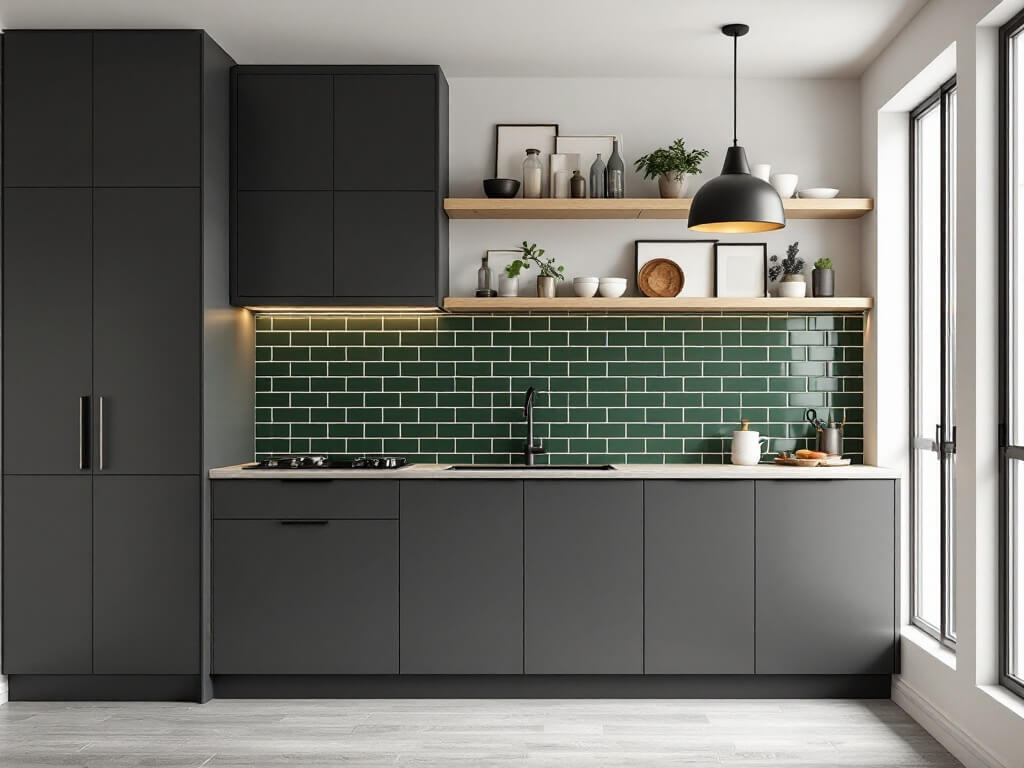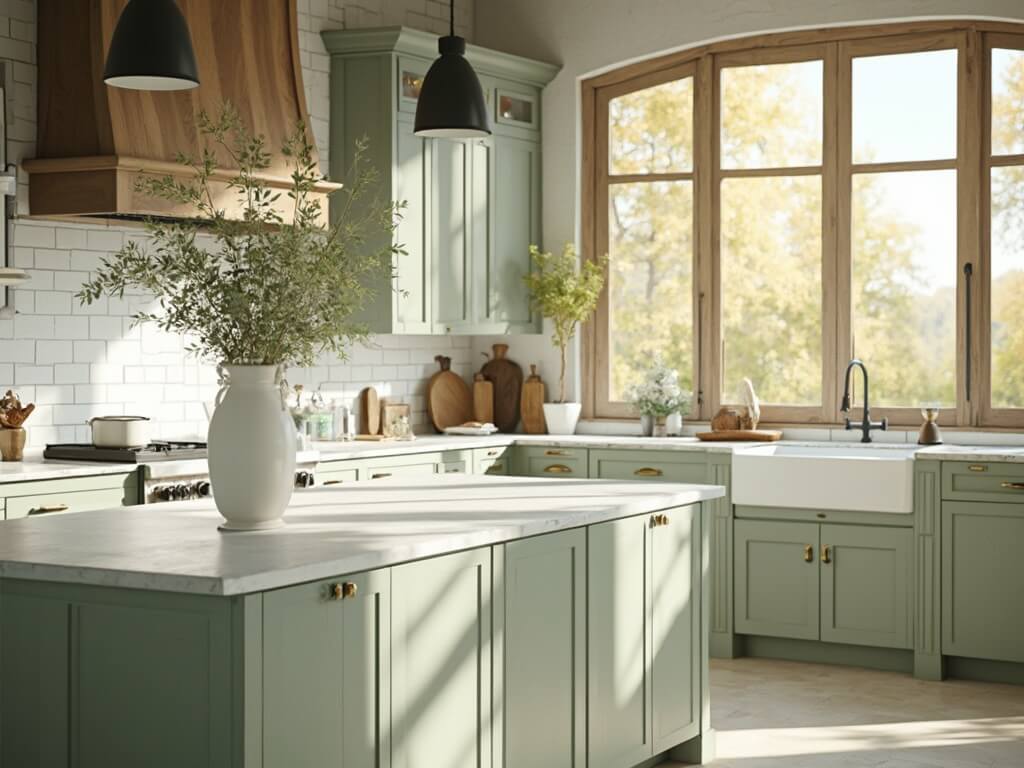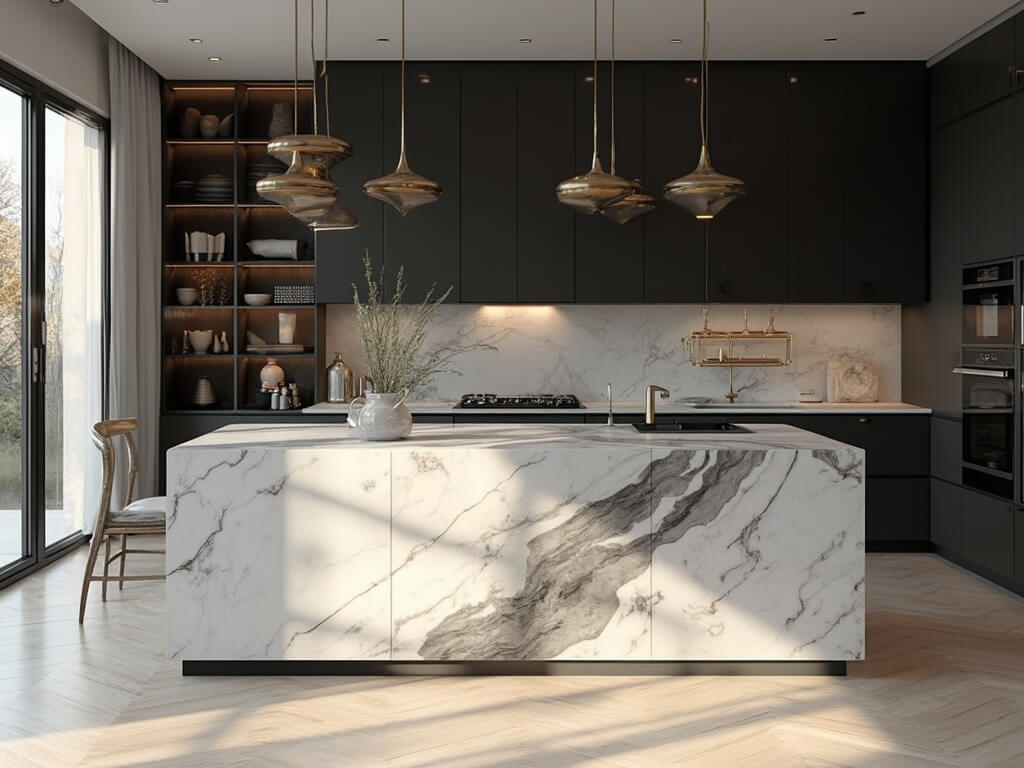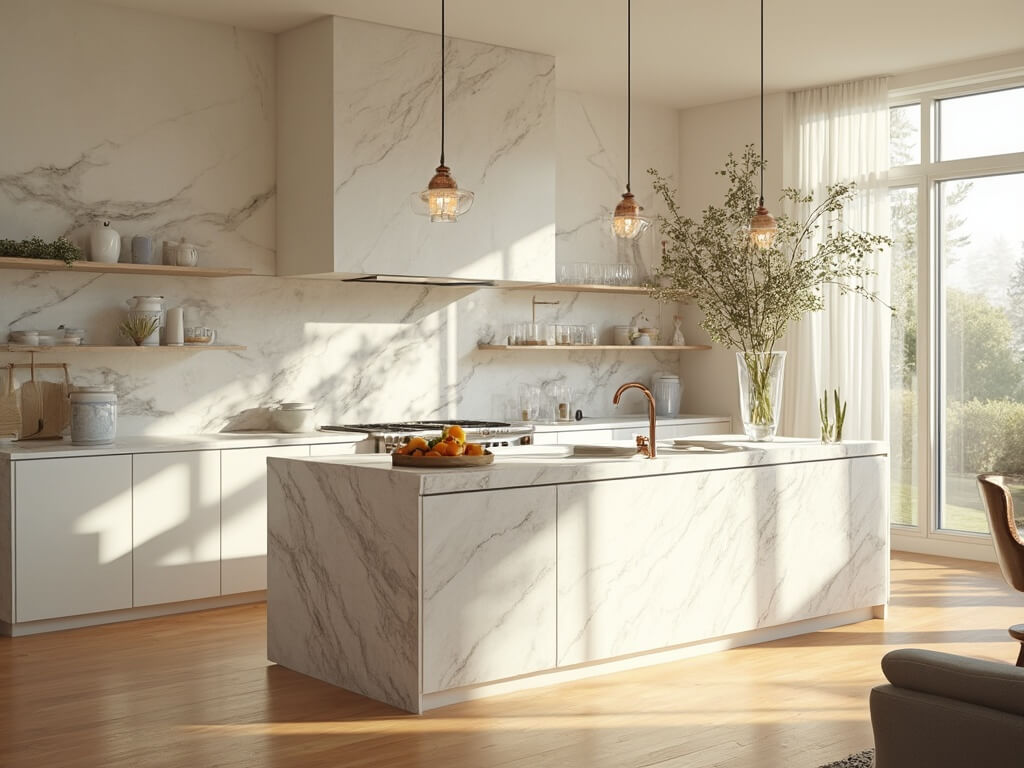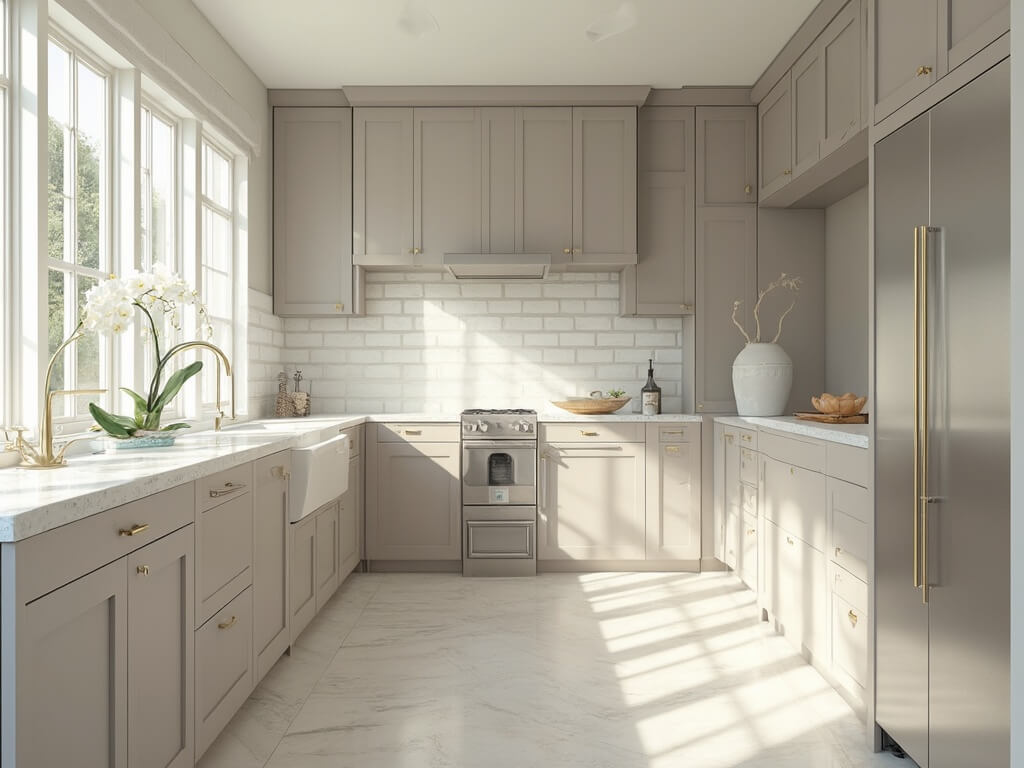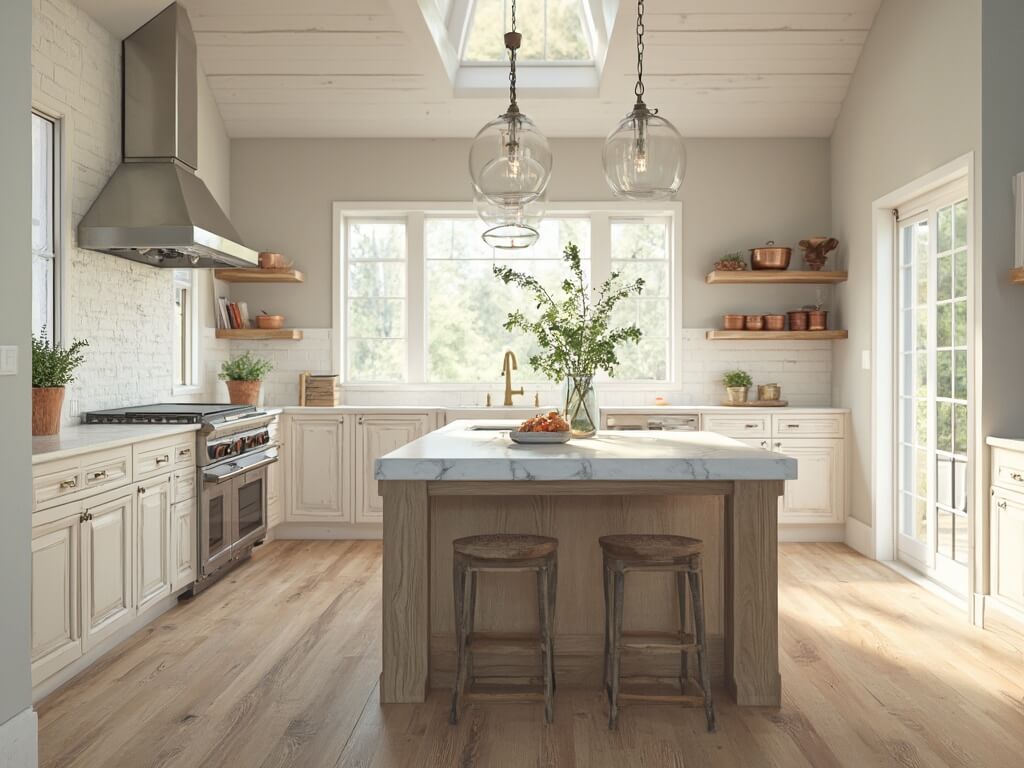Creating Your Dream Moody Kitchen: A Style Guide That Actually Works
Let me tell you something about moody kitchens – they’re not just another passing trend.
As a home designer who’s created countless kitchen spaces, I’ve seen firsthand how a well-executed moody kitchen can transform the heart of your home into something extraordinary.
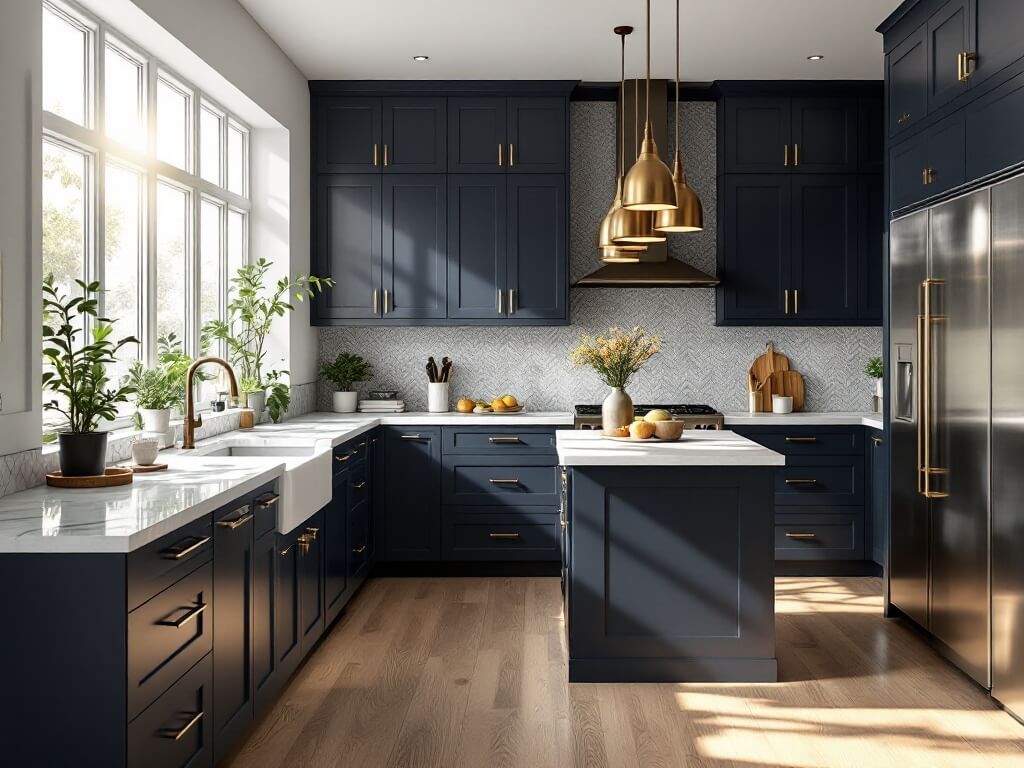
The Dark Side of Color (In the Best Way Possible)
First things first – let’s talk color.
Here’s what actually works:
- Deep navy blues (my personal favorite for cabinets)
- Forest greens
- Charcoal grays
- Rich blacks
- Deep burgundies
Pro Tip: Don’t feel pressured to go all-dark. I often mix one statement dark color with lighter neutrals for balance.
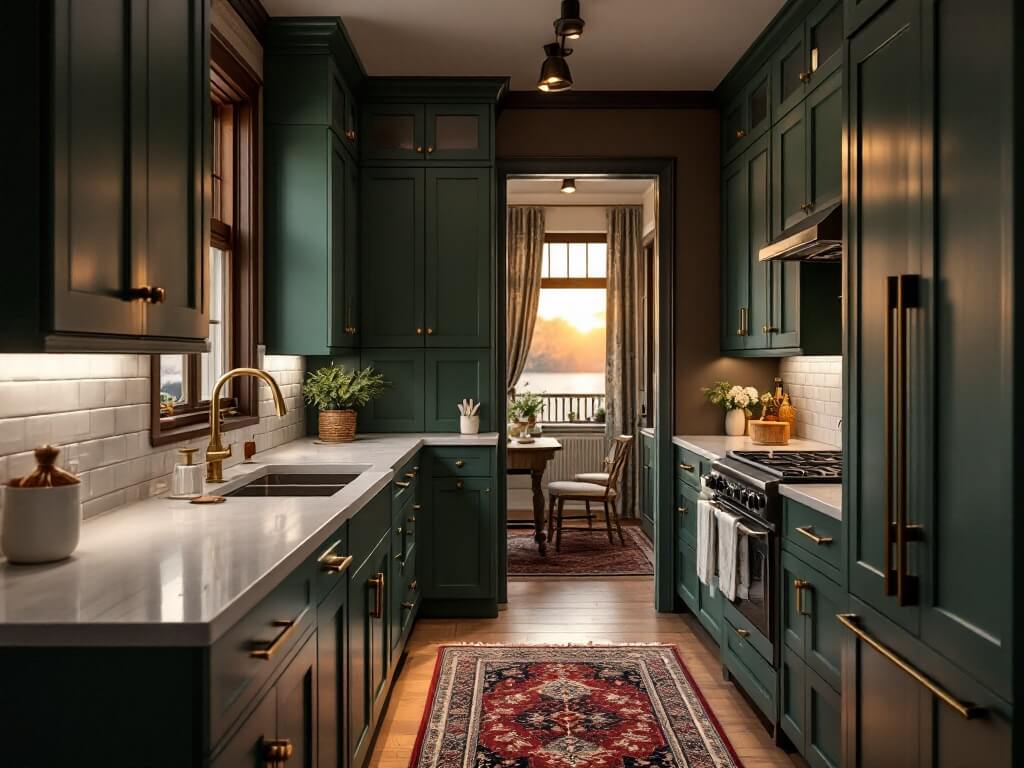
Lighting: The Make-or-Break Element
Here’s the thing about moody kitchens – bad lighting can make them feel like a cave.
Your lighting strategy needs:
- Task lighting under cabinets
- Pendant lights over islands
- Ambient lighting for overall warmth
- Statement fixtures in metallic finishes
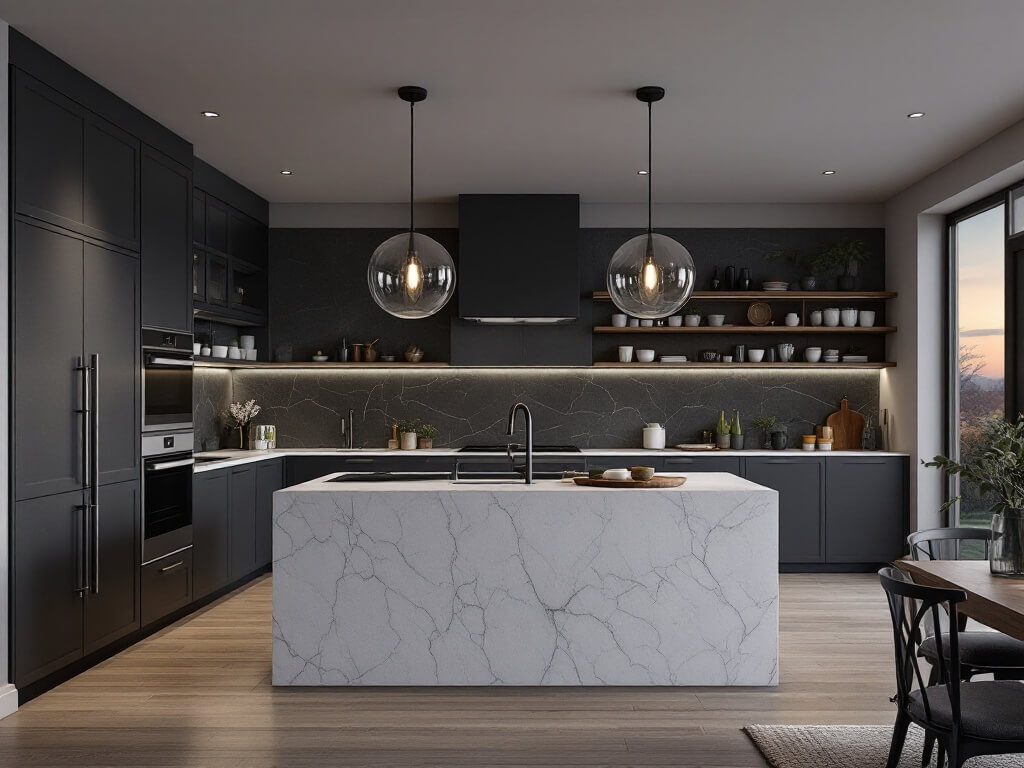
Materials That Make It Work
Let me share what I’ve found works best:
- Matte black hardware
- Brass or copper accents
- Textured backsplash tiles
- Natural stone countertops
- Wooden elements for warmth
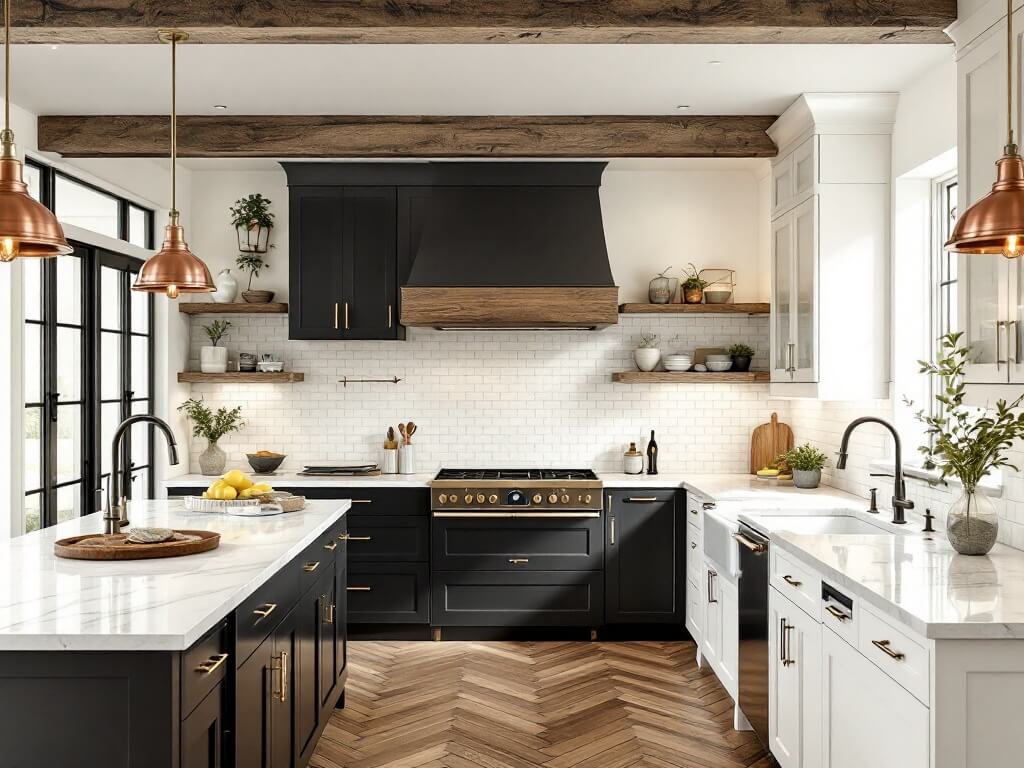
The Secret Sauce: Texture Play
This is where many people go wrong – they focus only on color.
Mix these textures:
- Smooth cabinet fronts
- Rough stone surfaces
- Glossy tile work
- Woven textiles
- Metallic finishes
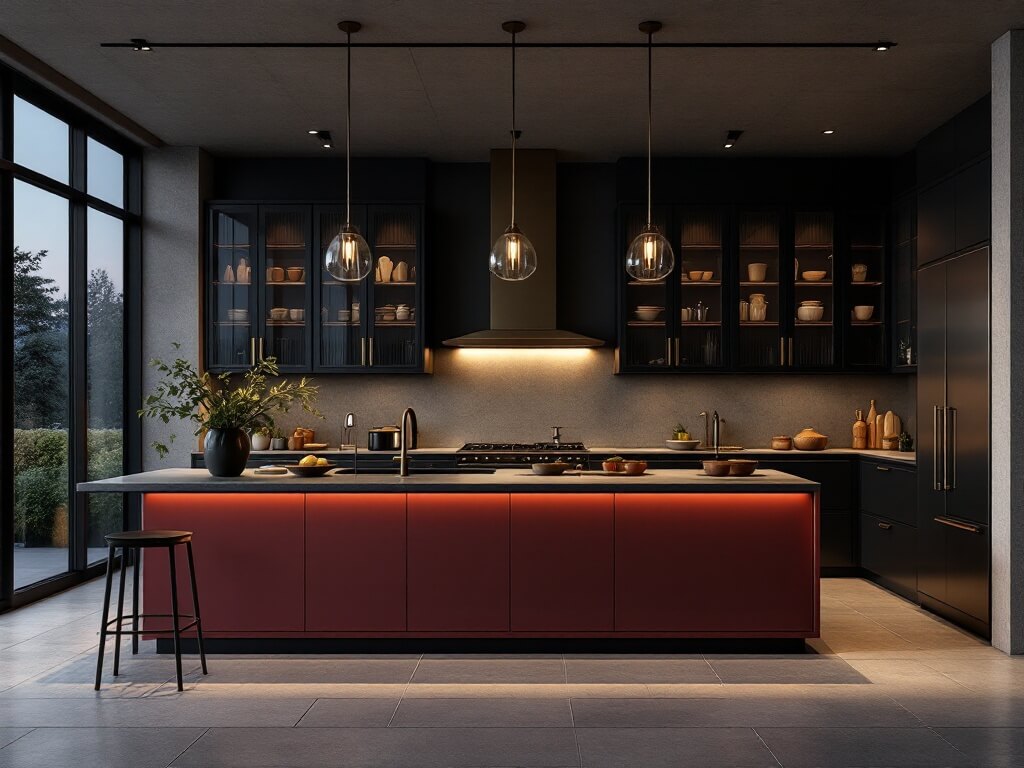
Practical Tips I’ve Learned:
- Always test paint samples in your actual space
- Invest in quality cabinet paint – it’s worth it
- Layer your lighting before committing to dark colors
- Include at least one light element for contrast
- Don’t forget about reflective surfaces
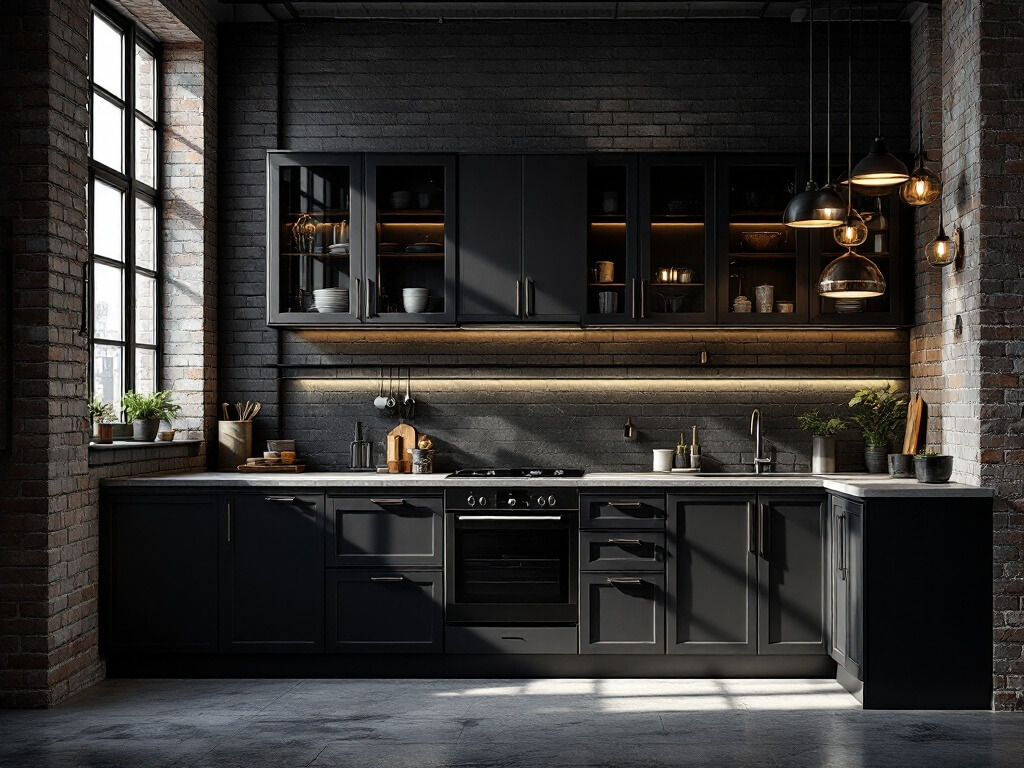
Bring It All Together:
Remember, a moody kitchen shouldn’t feel heavy or oppressive.
Think of it like cooking – it’s all about balance.
A touch of light here, a splash of dark there, and plenty of texture throughout.
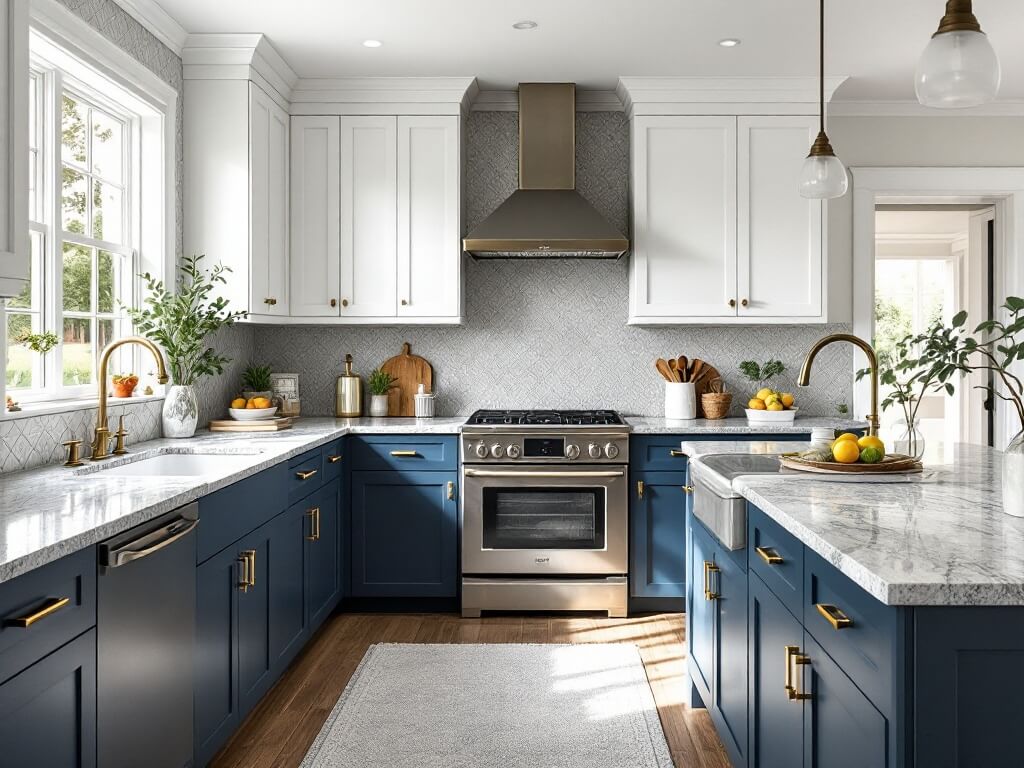
Final Thoughts:
The best moody kitchens tell a story. They’re sophisticated without being pretentious, dramatic without being dark, and most importantly, they’re livable.
